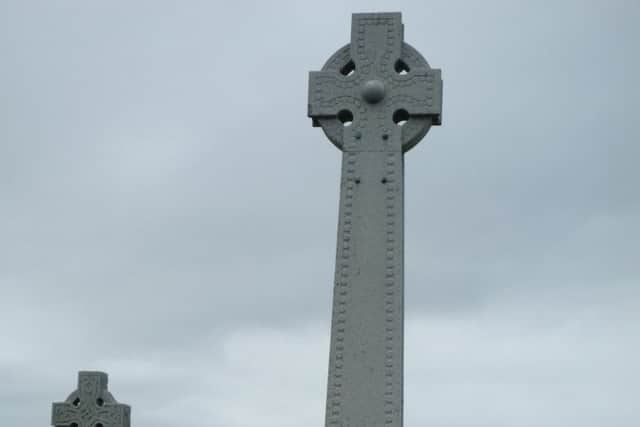Scotland’s invisible women reappear from shadows of history – Laura Waddell
One of my favourite Scottish monuments is on the Isle of Skye. It’s a large stone cross marking Flora MacDonald’s grave, known, of course, for assisting the escape of Bonnie Prince Charlie, although comparably little is known for certain about her own life, and her motivations have been interpreted in differing ways.
The stone, it is said paid for by public donations, looms huge and solidly, staking its claim to a bit of horizon as waves roll in the background. Far from most tourist hot spots, it is situated in Kilmuir Cemetery near the Trotternish Peninsula. It’s remote enough for visitors to starkly appreciate the wildness of Scottish nature at its most bold, and our individual smallness next to battering wind, roaring sea, and historical legend assaulting the senses all at once.
Advertisement
Hide AdAdvertisement
Hide AdBut it feels poignant not only for the setting or the story, but because it is a monument to a woman. Many monuments have prestige; quite often they’ve been designed to demonstrate the wealth of traders and patrons. Not all have the same power to inspire, or come anywhere near it.


The ability to evoke shivers comes from this comparative rarity; it feels not only a monument to MacDonald but a reminder that, often as quietly and remotely as the setting of this marker, the women of Scotland have also shaped history.
Author Sara Sheridan’s new book, Where are the Women? reimagines a Scotland where plentiful monuments, streets and natural wonders take the names of women. Look up a part of Scotland and it will tell you of local women who achieved remarkable things in art, science, social movements and professional fields, those who played a role in history in other ways, or who were persecuted as witches. Almost none of them have a monument in their honour; Sheridan has imagined strolling dedicated walkways, observing plaques, and looking upon celebratory fountains.
“Follow the bronze arrows to see women who influenced the area and indeed the world.” If we followed the author’s directions, we could come across, for example, a walkway in Glasgow Green culminating in Maggie Moffat, one of the earliest Scottish Suffragettes to be incarcerated, or a window in Dundee’s St Paul’s Cathedral depicting Margaret Blackwood, founder of Disability Income Group Scotland. Women achieving would be visible everywhere, built into the world around us. Isn’t that a powerful thought?
It’s a great bit of research, spanning centuries of poor archiving and relegation to footnotes and asides. I’ll consult it whenever I travel around the country, to note who came before and what they did, imprinting their lives onto spaces that have kept no visible trace of them. It’s moving to consider how it would feel were Sheridan’s imaginary monuments real, and modern citizens habitually moved among not only physical reminders of historic acts but the very idea itself that excellence takes the form of women.
Statues are a monument to genuine achievement in many cases and great inventions have come in eras women were socially dissuaded or literally barred from pursuing professions. At other times, men considered great have stood on others’ shoulders. Wealthy merchants profiting from the slave trade loom large in landmark buildings. Few poor men – or women – have statues dedicated to them, unless you consider clusters of unnamed soldiers representing war dead.
The average person probably couldn’t tell you the names, far less the stories, of very many statues dotted around their town. For most of us they are sleeping sculptural giants we walk right past. I haven’t always felt that campaigns to build new statues are the best focus of feminist energy, but replicating the image of men across our grandest squares and parks has contributed to our cultural ideas about who is taken seriously. We have placed our collective esteem in the image of man, dedicated totems, and rewarded with the enduring honour of names strewn across our maps. One might think, from walking around, that no women live here, far less have achieved anything.
Advertisement
Hide AdAdvertisement
Hide AdIn the notes, Sheridan describes her research process, coming across book after book repeating the same stories of men. There are hidden accomplishments in every city and town we walk through. Efforts like Sheridan’s help draw Scotland’s women out of historical invisibility.
